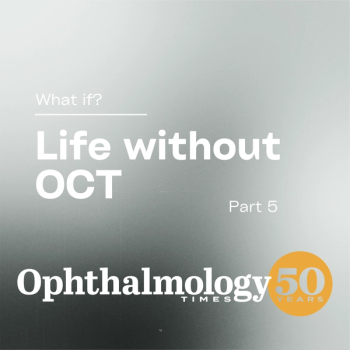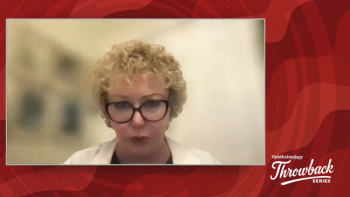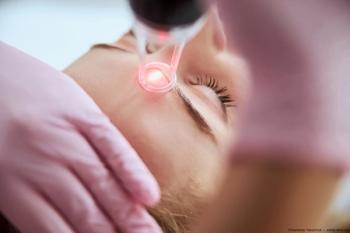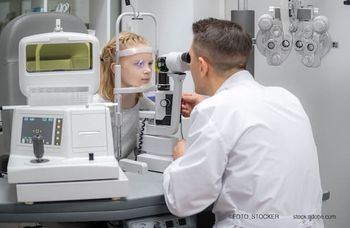
- Ophthalmology Times: July 2023
- Volume 48
- Issue 7
Retinal progenitor cells: Targeting retinitis pigmentosa

Key Takeaways
- jCell therapy, using allogeneic retinal progenitor cells, may improve visual acuity in retinitis pigmentosa patients without immunosuppressive therapy.
- The phase 2b study involved 83 participants, testing 6.0M and 3.0M doses against a sham group, with the 6.0M dose showing greater visual improvements.
For visual recovery to occur, there must be photoreceptors left that can be rescued.
Reviewed by Henry Klassen, MD, PhD
In a phase 2b study, jCell (famzeretcel, jCyte), a product that consists of allogeneic retinal progenitor cells (RPCs), may benefit patients with retinitis pigmentosa (RP). Following intravitreal injection, a subset of patients achieved improvements in visual acuity in a phase 2b study, according to Henry Klassen, MD, PhD, Professor, and Director, Stem Cell and Retinal Regeneration Program Gavin Herbert Eye Institute & Stem Cell Research Center, University of California, Irvine. He reported the results at the 8th annual Retinal Cell & Gene Therapy Innovation Summit.
He explained that RPCs supply neurotrophic factors (NTFs) that in turn support survival and function of retinal neurons. An added advantage of jCell is that the treatment is tolerated without the need for immunosuppressive therapy.
Study design
This study was the largest of its kind of a new potential medication to treat RP.
The study participants represented a genetically diverse spectrum of the disorder; all were over 18 years of age, had been clinically diagnosed with RP, and had no other ocular disease characterized by impaired visual function. The best-corrected visual acuities (BCVAs) of the patients ranged from 20/80 to 20/800 in the study eye at baseline.
Eighty-three patients were randomly assigned to 2 active treatment groups and a sham treatment group. The investigators tested 2 jCell doses, 6.0M (million cells) and 3.0M, in 27 patients each; 29 patients served as controls. The primary study end point was the mean change in BCVA from baseline to 12 months. Patients were treated in the eye with the worse vision, Dr. Klassen recounted.
The investigators found that the treatment was well-tolerated. No dose-related increase in treatment-emergent adverse events was seen when the 2 active-treatment study doses were compared. Under half of the patients reported a treatment emergent adverse event considered related or possibly related to the treatment, with conjunctival hemorrhage the most frequent complaint.
The 6.0M dose resulted in greater visual improvements compared with the 3.0M and sham groups in the Per Protocol population (n=76); compared with sham, the higher active treatment dose achieved a mean improvement of 5.2 letters at 6 months and 4.6 letters at 12 months; the differences did not reach significance. The 3.0M dose showed results that were similar to those of the sham group.
The mean changes in the secondary endpoints studied at 12 months among the patients randomized to the higher dose of jCell were a 90% increase in peak contrast sensitivity, a 132% improvement in kinetic visual field area, a 0.52-logit increase in the mobility-related visual function, and a 0.37-logit improvement in the overall visual ability, the last 2 of which were evaluated using the Visual Function Questionnaire-48.
A consideration
Klassen explained that substantial interocular differences in BCVAs can lead to less reliable endpoint measurements and spontaneous and variable improvements in the patients’ worse-seeing eyes. This effect has been reported previously in a number of studies.
He noted that more reliable endpoint measurements of the changes in BCVA were seen in the patients with a 15-letter or less disparity between the worse-seeing study eye and fellow eye at baseline. Looking at the data this way showed that the mean improvement in the 6.0M group compared with sham was 8.9 letters at 6 months and 9.4 letters at 12 months; both differences reached significance (p=0.014 and p=0.019, respectively).
The same guideline regarding difference between eyes was reflected in the secondary outcomes, i.e., the mean increase from baseline to 12 months in peak contrast sensitivity in the 6.0M group was 146%, kinetic visual field area 192%, mobility-related visual function 0.53 logits, and overall visual ability 0.42 logits.
Viable photoreceptor cells and adequate visual field are keys to response
A couple of basics are needed to achieve a response to jCell.
Based on the neurotrophic mechanism of jCell, it was hypothesized that patients with RP need to have sufficient living photoreceptors to enable restoration of visual function.
Photoreceptors cannot divide and replace dead adjacent photoreceptors. In order to benefit from neurotrophic factors, a photoreceptor may have lost its function but must still be alive.
More specifically, sufficient living cone photoreceptors are needed to achieve a BCVA response to the jCell injection.
Dr. Klassen explained that cones require sufficient proximal rods for their normal function and survival; the cones are thought to require rod-derived cone viability factor (RdCVF) released by rods in order to adequately metabolize glucose.
The cones gradually die in the absence of a sufficient number of rods.
A corollary to this is the hypothesis that sufficient central visual field would be required to enable a cone-driven BCVA response to jCell. The retinal anatomy suggests that a residual 8 to 10 degrees of visual field diameter may be important for a BCVA response.
Refining the data analysis even more showed a greater improvement in the mean BCVA in patients with a 15-letter or less disparity between the worse-seeing study eye and fellow eye and a central visual field diameter of at least 8 degrees at baseline, i.e., those without end-stage visual field restriction. When the data were considered for this defined population, the investigators saw significant mean improvements in the BCVA at all time points beyond 1 month, compared with baseline, with increases of 13.1 letters at 3 months, 15.8 letters at 6 months, 13.7 letters at 9 months, and 17.1 letters at 12 months for the 6.0M group compared with sham; all differences reached significance.
The conclusions reached by the study were as follows:
- Reliable BCVA measurements in RP require low baseline differences in BCVA between the patient’s 2 eyes
- For visual recovery to occur, there must be photoreceptors left that can be rescued
- Using these criteria, statistically significant improvement across multiple endpoints appears achievable following jCell therapy for RP
Henry Klassen, MD, PhD
E: [email protected]
Klassen is a professor and director of the Stem Cell and Retinal Regeneration Program at the University of California, Irvine’s Gavin Herbert Eye Institute. He is on the board of directors and holds an equity interest in jCyte, Inc.
Articles in this issue
about 2 years ago
Study examines effect of integrating blue laser into imagesover 2 years ago
MicroPulse TLT offers proven versatility in the practiceover 2 years ago
Pearls to ensure safe, efficient phacoemulsification proceduresover 2 years ago
Surgical system offers sustained IOP reduction over 2 yearsover 2 years ago
Pearls for management of Pseudomonas scleritisNewsletter
Don’t miss out—get Ophthalmology Times updates on the latest clinical advancements and expert interviews, straight to your inbox.



















































.png)


